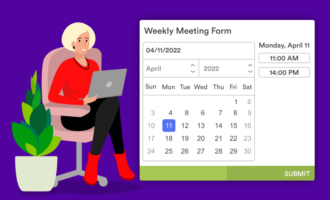As a small business owner, you are most likely accustomed to working with your staff in an office where you physically interact each day. Even if you offer flex-time or telecommuting options, you most likely haven’t led your entire team on a remote basis.
However, during the current pandemic, most companies cannot allow their employees to work in close proximity to one another. As a result, many businesses have moved to a completely remote work environment.
You may not be able to lead your employees in the usual way, and you may face new challenges in overseeing your employees’ activities and productivity. To be an effective leader, your management and leadership techniques will have to change.
Here are some tips for this new way of leading in a remote work environment.
DON’T micromanage
It can be difficult to go from having open access to all your team members to having no access at all. Your natural reaction may be to become an instant micromanager to monitor what your team is doing at all times.
Don’t do this.
Instead, give employees the space to work. Trust that they’re getting the work done rather than checking in every five minutes on Slack or inundating them with emails. If you notice that projects and tasks don’t seem to be getting done, then you can step in — but not before.
DO schedule availability
One way to avoid micromanaging is to set specific times where your team can reach out to you with questions. Decide on a daily schedule for video or audio conferences or open group chat.
Provide multiple times throughout each day, including options that fit with your team’s other tasks. Make these time slots convenient for your team rather than scheduling them during a traditional dinner hour or at 6:00 a.m. just because that’s what works for you.
You can still make yourself available so your team can connect when they need you. However, this helps you focus on your to-do list while your team knows you’re confident in their ability to stay on task.
DO lead with compassion
Use this time to improve your capacity for emotional intelligence, empathy, and compassion. It’s also an opportune time to inspire your team to keep them motivated and positive during these uncertain times.
Your team has a lot on their minds, just as you do. They may be worried about their jobs, their spouse’s income, and their health or the health of a loved one. They also may be struggling to navigate how to work from home and handle their children’s online education at the same time.
Realizing and acknowledging what they are going through can provide them with comfort. Knowing they can look to you for understanding and guidance leads to greater productivity.
DO leverage technology
Another way to avoid micromanaging your remote workers is to take advantage of a wide array of tools and technology. These tools make leading remotely much easier by helping you connect, communicate, and collaborate with your team.
The most helpful tools include video conferencing for meetings and huddle sessions, video messages to the team with updates on what’s happening, and virtual hangouts for social interaction.
Many of the companies behind these technologies understand what companies like yours are experiencing during this pandemic and have begun offering their solutions for free or at a vastly discounted rate. This makes it easier for you to leverage available technology and facilitate your role as a leader.
DO define expectations
One of the best ways to lead your remote team is to define your expectations about what a remote work environment looks like. This means sending everyone a formal process and a schedule for how the company will operate.
In outlining your expectations, make sure you cover all aspects of work:
- New goals and strategies related to new financial projections
- Changes to the business model or revenue stream
- Alterations to roles and responsibilities
- Projects in the works or on hold
- Hours and accessibility
- Payments and benefits
- A remote work policy document that includes security, privacy, tools, standards, and etiquette
As a leader, you should address each of these areas. Include the context for why these changes matter in light of how the company now operates. It’s also important to explain these expectations from the context of the benefit it provides to the team.
Learn and improve together
You may not get every decision right in this new work environment. It’s a learning experience for you and your team. Working together with regular communication and feedback, you can create a productive and successful remote version of your company.












































































































Send Comment: